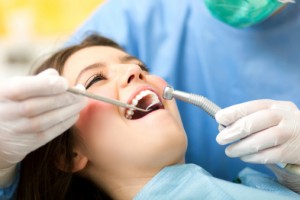“Bad teeth run in my family.” We hear this often in dentistry. Frequently, what patients really mean is that they have the same bad habits as other family members. We should start at the beginning first. Bacteria both good and bad live in everyone’s mouth. When sugar is in the mouth, these bacteria convert them into acid. As this acid sits on our teeth it decalcifies them leading to decay. Every time you take in sugar your teeth are under “acid attack” for about 20 minutes afterwards. How can we alter this process? Remove any one of these elements from the equation, and decay is not possible. Since most of us would prefer to have teeth, we need to eliminate one of the other factors. We can either cut down the amount and frequency of sugar intake; reduce bacteria in our mouth, or both.
Many of our patients don’t know why they seem to have at least one or more cavities at every appointment. Often, these patients tell us that they don’t really drink that much pop or eat sweets. This usually occurs for one of three reasons: 1) They aren’t brushing enough or correctly. 2) They don’t realize the sugar and acid content of their food and beverages. 3) It isn’t the quantity of sugar intake, but rather the duration of sugar exposure.
Let’s look at each of these separately. Correct brushing isn’t a given; it must be taught. When brushing, try to visualize your tooth as having distinct sides (Cheek-side, Tongue-side, front, back, and biting surface). In order to prevent decay, all of these sides must be cleaned twice a day. To properly remove plaque from your teeth, the brush needs to be held at a 45° angle to the gum line on all the cheek-side and back tongue-side surfaces. To clean the backs of your front teeth, the brush can be moved in and out at a 45° angle with the handle coming straight out of your mouth. To clean in between your teeth, you must use floss. Many people neglect or flat out ignore this part of their teeth. Plaque can harden over time and become tartar. This tartar acts to constantly inflame your gums, and over time can lead to bone loss, periodontal disease, and eventual tooth loss. Many people with periodontal disease have few cavities, but ultimately end up losing their teeth.
The second aspect is sugar and acid content of food and beverages. Below are some examples of the sugar and acid levels in popular drinks.
*Laboratory tests, Dr. John Ruby, University of Alabama, Birmingham School of Dentistry, 2007.
** 4.0 grams = 1 tsp sugar
Minnesota Dental Association
As you can see, even diet beverages have extremely high acid contents. This acts to dissolve tooth structure increasing the incidence of decay. Add sugar to these low pH’s and you are asking for trouble. So, what can you drink if you are looking for a good alternative? Water has always been the most natural choice for people who want to avoid any risk to their teeth. It is also recommended that you drink about 2 liters of water per day. There are also sugar-free drink mixes available, but beware of citrus flavored varieties. If one of the first ingredients listed is Citric Acid, it probably has a high acid content. As with anything, moderation is the key. We personally drink soft-drinks, but limit our intake.
The final part of the equation is to limit the duration of exposure. It is better (from a dental standpoint) to drink a gallon of soda in a minute than it is to sip a 12oz can over 2-3 hours. That is because with every sip you are bathing your teeth in sugar and acid instigating an acid attack that will continue for 20 minute after the last sip. If you are slowly sipping on a soda, this process happens over hours. Many of our patients that struggle with decay from soda tell us that they drink it when they are reading, watching TV, at work, or while playing video games. People tend to lose track of time during these activities, and soda intake almost becomes unconscious. If you are going to drink pop, try to make it a treat or drink it only with meals. This will limit the duration of exposure, and help decrease decay. Not to mention, colas contain no nutritive value, so cutting back will also help your waist-line too.
Reducing bacteria in your mouth can also be aided by the use of essential oil type mouth rinses such as Listerine®. These types of rinses have been shown to reduce bacterial levels in the mouth. They have also shown to reduce the incidence of gingivitis in people who aren’t flossing, and aid those who are.
Decay can happen rapidly at any age when changes to your diet or habits occur. That is why it is important to visit your dentist every 6 months or more to make sure that decay is not present. The dentist will take x-rays that allow them to visualize in between your teeth and catch decay at its earliest stages. In addition, early treatment is generally much more affordable than treatment at more advanced stages. Along with proper diet, brushing and flossing habits, seeing your dentist will help you create a smile to last a lifetime. Call today and schedule your cleaning and exam!
 If you have one or more children, you know how busy life can get. The last thing you need is the hassle of looking for one dentist for yourself and another who can care for your little one.
If you have one or more children, you know how busy life can get. The last thing you need is the hassle of looking for one dentist for yourself and another who can care for your little one.



